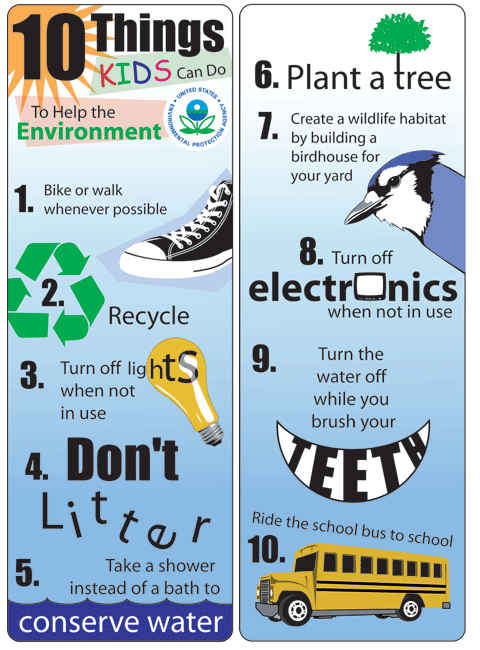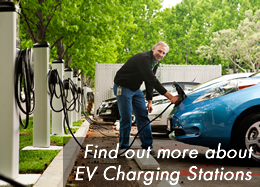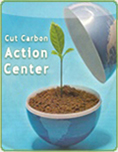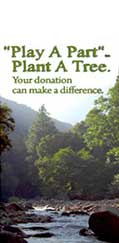Fun Games and Sites
Play A Recycling Game. You have more that one to choose from – - pick and choose or try them all!
1) Clean Up the Park
http://funbrain.familyeducation.com/cgi-bin/shtml.cgi?A1=../recycle/index.html
2) Dumptown Game http://www.epa.gov/recyclecity/gameintro.htm
3) Quest of the Ring Leaders http://www.ringleader.com/quest/intro.htm
Earth Related Fun Pages
Earth Related Fun Pages:
Earth Fast facts
Wonders of the World
Earth Matters
Planetpals Recycle Center
Thinking Green Class Projects
Worldly Wise Tips
The Story of Earthday
Earthday Activity Page
Green Associations
Let’s Weather Together
A Look at Eco Books
Food Chain Chart
Earth Size Chart
Ecology Dictionary
Call
Call your Volunteer Center. This is a place that can help you find volunteer projects. To find a Volunteer Center near you, visit this Web site or call 1-800-VOLUNTEER. Then ask an adult to help you call. Tell them your age and ask if there are ways that you can help the environment.
Read
Project for a Healthy Planet: Simple Environmental Experiments for Kids
By Shar Levine and Allison Grafton
Jossey-Bass
Projects to help kids understand the causes of pollution and find ways to protect the environment.
Recycle! A Handbook for Kids
By Gail Gibbons
Little, Brown & Company
Explains the process of recycling from start to finish.
Where Does the Garbage Go?
By Paul Showers
HarperTrophy
Shows how people create waste and how this waste can be recycled or end up in a landfill.
Dinosaurs to the Rescue: A Guide to Protecting Our Planet
By Laurie Krasny Brown & Marc Brown
Little, Brown & Company
The creators of Arthur suggest many ways that young children can protect the Earth.
Fernando’s Gift
By Douglas Keister
Sierra Club
You can read this book in English and Spanish. Find out what Fernando and Carmina, children who live in the rainforest of Costa Rica, do when Carmina’s favorite tree is cut down.
I Want to Be an Environmentalist
By Stephanie Maze
Harcourt
Meet people—such as botanists, economists, organic farmers, biologists, and scuba divers—who work to protect the Earth.
Kid Heroes of the Environment: Simple Things Real Kids Are Doing to Save the Earth
Catherine Dee, Ed.
Earth Works Press
Read about what kids across the country are doing to help the environment. Find out what steps to take to complete a volunteer project and get contact information for environmental organizations.
The Lorax
By Dr. Seuss
Random House
The Once-ler greedily chops down the Truffula Tree tufts to make Thneeds. Will he listen to the Lorax’s warnings before all of the trees are gone?
Links
Meet the GREENS
Watch original cartoon adventures with THE GREENS and play related green games. Here you’ll discover news, downloads, a blog, action tips, links, and much more.
Earth 911
Type in your zip code and get information about environmental programs in your community.
The Big Gift for the Rain Forest
Learn how you can protect an acre of the rain forest.
Kids Make a Difference
Learn how you can make a difference by planting trees.
Kids’ Planet
Tell political leaders how you feel about protecting wildlife.
Tree Musketeers
Join an organization run by kids! You, too, can become a Tree Musketeer and plant trees while learning about the environment.
Plant a Tree
Here’s how you can plant a tree:
1. First decide when to plant your tree. Carbon Day is Held each year on Sept 15.
2. Now decide where to plant your tree. You can plant your tree in your backyard with your family. Or you can ask your teacher if there is a place to plant it at school.
3. Buy your tree. For $10 you can join the National Arbor Day Foundation and receive ten trees in the mail. Ask an adult to help you sign up and order your trees. You can also buy a tree from your local nursery (a place that grows trees and other plants). Ask a person who works at the nursery to help you choose a tree that will grow well in your area.
4. Prepare your tree for planting. If you ordered a tree through the mail, it will have bare roots. Unpack the tree and soak the roots in water for 3 to 6 hours. If you bought a tree at a nursery, ask someone there for planting instructions.
5. Plant your tree. Dig a hole that is just as deep as and about twice as wide as the roots. Place the tree in the hole and hold it upright while a friend fills the hole with dirt. Pack down the dirt. Give your tree plenty of water.
6. Spread a layer of mulch about two inches deep around your tree but not touching it. (You can buy mulch at a nursery.) Mulch helps keep your tree from drying up.
7. Water your tree often over the next year and watch it grow!
8. Think about it:
· Who did your project help?
· What did you see and hear during the project?
· How did this project make you feel?
· What did you learn that you did not know before?
· What new questions or ideas do you have?
· Is there anything you would do differently the next time?
9. Celebrate! Thank everyone who helped you. And remember to REGISTER YOUR TREE ON CARBONDAY.COM
10. Keep helping. There are plenty of other ways to help the environment. Get your classmates or your after school program to adopt a park to keep clean. You can go back every month and have a contest to see who can pick up the most trash in half an hour.
Practice 3 Rs: Reduce, Reuse, Recycle
Practice the three Rs of conservation: reduce, reuse, recycle. Here are some ideas to get you started.
- Reduce: Use Only What You Need! Here are some easy ways for you to help reduce the trash you create and save natural resources.
· Use fewer grocery bags! Bring your own cloth bags to the grocery store when you shop. Or bring back the plastic or paper bags you got the last time.
· Check it out. Look for and buy products that have less packaging. But if something you really need comes with packaging (like bottles or cardboard boxes), try to reuse or recycle it.
· Water matters. Make an effort to use less water. Figure out how much water you usually use to take a shower by trying the Shower Estimation activity. Then come up with ways to use less water like turning off the shower as you wash your hair. You could also ask your parents to install low-flow showerheads or turn off the water while you brush your teeth.
· Turn it off. Use less electricity so there’s less air pollution. Climb the stairs instead of using the elevator. Turn off the lights, TV, and computer when you’re not using them.
- Reuse! Here’s a great way to make less waste:
· Be creative and reuse! Find a second use for trash. Use old newspapers to makeRecycled Paper. Use this paper to make cards to write let. Make a Junk Picture Frame out of cardboard, buttons, and other small pieces of trash.
- Recycle! Whenever possible, give an item a second life! Here are some great ways to recycle:
· Buy recycled products. Ask your family or school to use recycled paper and other products. When you buy recycled products, the message is clear–you want to protect the environment.
· Be helpful. Does your town have a recycling center? If so, encourage your family and neighbors to recycle. Paper, plastics, aluminum cans, and glass can all be recycled. If your community or school doesn’t have curbside pick-up or a recycling program, write to your elected officials about starting one. (Visit the links at the bottom of the page to learn how.)
· Hailey and her girl scout troop in Florida planted trees in a neighborhood park to celebrate Carbon Day. Carbon Day is a holiday to encourage people to plant trees. Trees produce oxygen for us to breathe, remove pollution from the air, and provide food and shelter for wildlife.
Videos
Start your own clean-up project
Here’s how to start your own clean-up project:
- Think of a place that is important to you. It might be a bus stop near your house, your school playground, a nearby beach, or any other place where you like to spend time.
- What can you do to help your favorite place look its best? You could pick up trash, remove weeds, add a coat of paint, or donate plants.
- Get permission. Get permission before you make big changes, like planting, weeding, or painting. Ask an adult to help you call a city official or the site owner. For example, if you are planting a tree in a park, you should contact the Department of Public Works.
- Tell your friends and family. Tell your friends and family about your project and ask if they want to help. Find a day when your helpers will be free.
- Collect supplies. Collect clean-up supplies like gloves, trash bags, paper towels, and glass cleaner. Don’t forget to make a Mechanical Grabber (pdf: 475k, Adobe Acrobat required)
- Let the clean-up begin! Make sure to bring an adult with you. When your clean-up day arrives, make your favorite place look its best. Take “before” and “after” photos to send to ZOOM.
- Safety first. Don’t pick up any sharp objects, such as broken glass. If you find something sharp, ask an adult to take care of it for you.
- Wait before you throw! If you find any recyclable items like cans or paper bags, don’t throw them out! Bring them to your local recycling center instead!
- Think about it.
· Who did your clean-up help?
· What did you see and hear during the clean-up?
· How did the clean-up make you feel?
· What did you learn that you did not know before?
· What new questions or ideas do you have?
· Is there anything you would do differently the next time?
- Celebrate! Thank everyone who helped you. If you took pictures, you can send some to the friends and family members who volunteered with you. And remember to log your hours and share your story.
- Keep helping. Go back to your area once a month to keep it clean. Write a letter to your local newspaper and tell them about your project. Tell them why this place is special to you and what people can do to help take care of it. Remember to send your “before” and “after” pictures, too.










